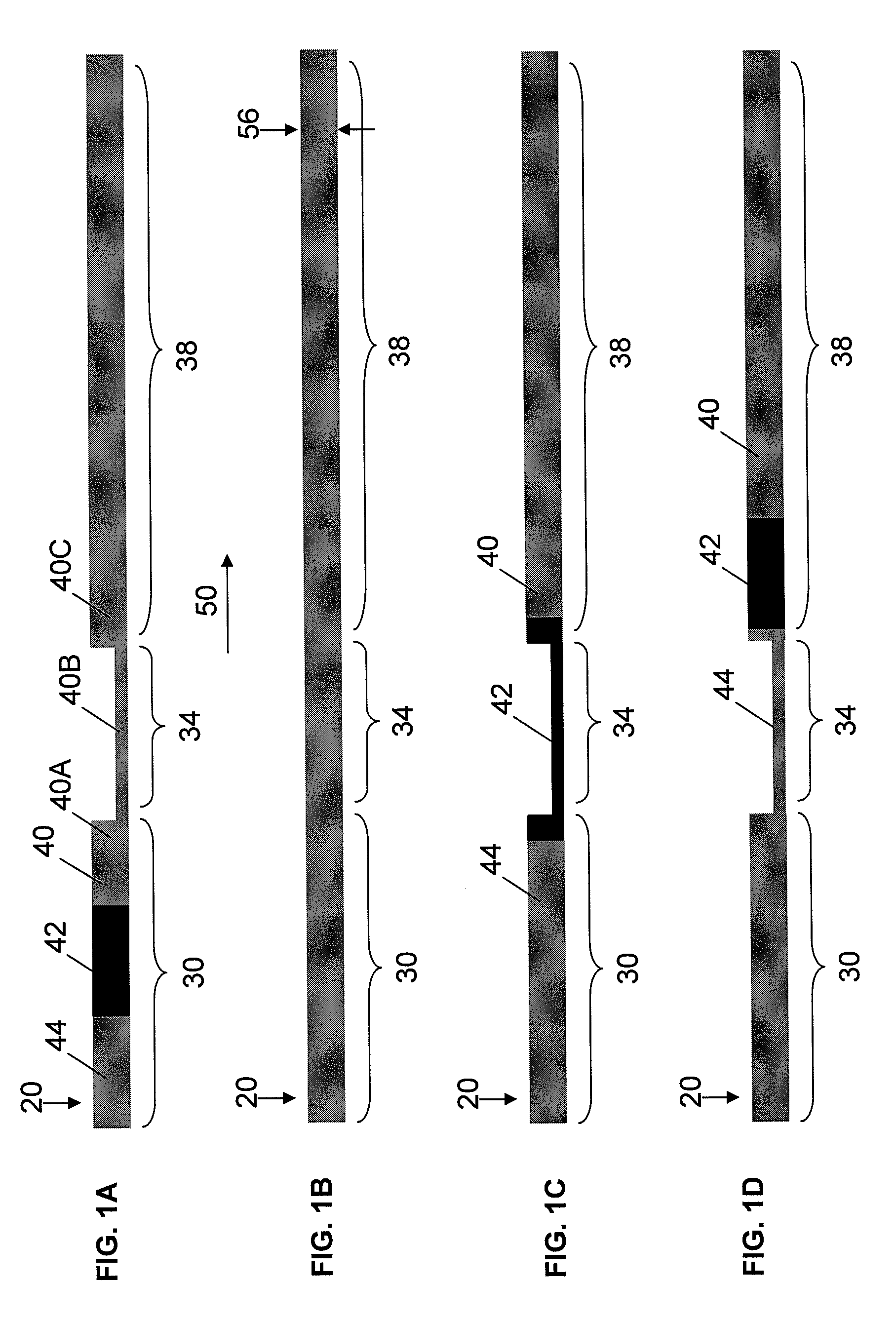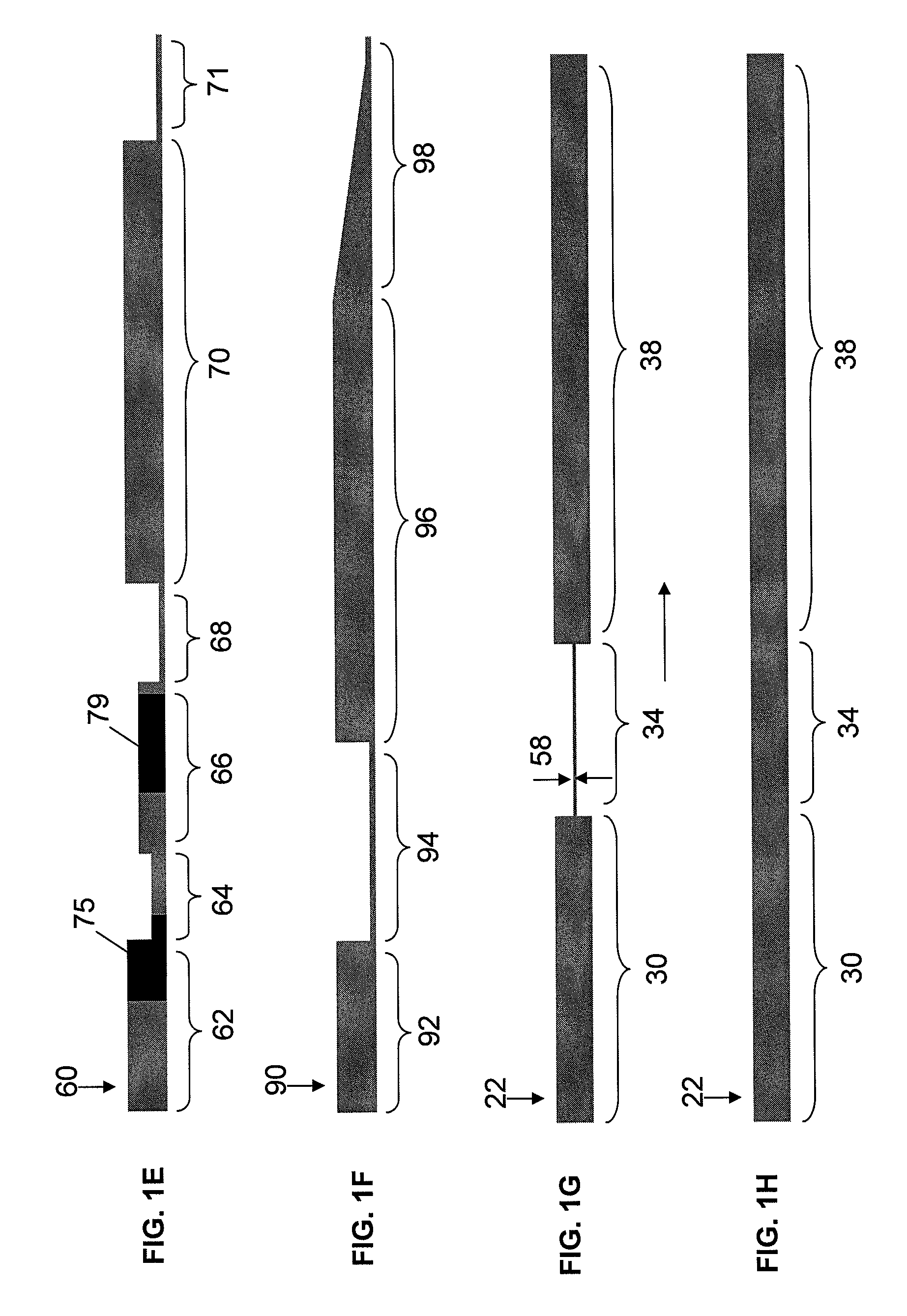Flow control in microfluidic systems
a microfluidic system and flow control technology, applied in the field of microfluidic systems, can solve the problems of adding a level of cost and sophistication, and achieve the effect of reducing the volumetric flow ra
- Summary
- Abstract
- Description
- Claims
- Application Information
AI Technical Summary
Benefits of technology
Problems solved by technology
Method used
Image
Examples
example 1
Fabrication of Microfluidic Channels
[0134]A method for fabricating a microfluidic channel system is described.
[0135]Channel systems, such as the ones shown in FIGS. 1-8, were designed with a computer-aided design (CAD) program. The microfluidic devices were formed in poly(dimethylsiloxane) Sylgard 184 (PDMS, Dow Corning, Ellsworth, Germantown, Wis.) by rapid prototyping using masters made in SU8 photoresist (MicroChem, Newton, Mass.). The masters were produced on a silicon wafer and were used to replicate the negative pattern in PDMS. The masters contained two levels of SU8, one level with a thickness (height) of ˜70 μm defining the channels in the immunoassay area, and a second thickness (height) of ˜360 μm defining the reagent storage and waste areas. Another master was designed with channel having a thickness (height) of 33 μm. The masters were silanized with (tridecafluoro-1,1,2,2-tetrahydrooctyl)trichlorosilane (ABC-R, Germany). PDMS was mixed according to the manufacturer's in...
example 2
Regulating Flow Rate Using Differential Viscosity of Fluids and a Flow Constriction Positioned Upstream of an Analysis Region
[0137]This example describes a method for regulating the flow rate in a microchannel using a flow constriction region positioned upstream of an analysis region and fluids of different viscosities.
[0138]The microchannels produced in PDMS or Polystyrene (see Example 1) were sealed against a plate of polystyrene (NUNC Omnitray, VWR, West Chester, Pa.) in the case of PDMS, or a biocompatible adhesive (in the case of polystyrene substrates). For the latter, the polystyrene substrate was drilled to obtain access holes prior to application of the cover. In a different approach, the holes were formed in the thermoplastic during the injection molding process by using pillars inside the cavity of the injection molding machine.
[0139]A first channel portion 30 and a third channel portion 38 (e.g., as shown in FIG. 1) were 500 μm wide and 376 μm deep; second channel portio...
example 3
Regulating Flow Rate Using Differential Viscosity of Fluids and a Flow Constriction Positioned Near an Outlet of a Microchannel System
[0146]This example describes a method for regulating the flow rate in a channel using a flow constriction positioned downstream of an analysis region near an outlet of the microchannel system.
[0147]A microfluidic device having four sections, as shown in FIG. 6A, was formed using the method described in Example 1. The first section included a channel 78 having a width of 120 μm and a depth of 50 μm connecting the inlet of the device to a second section, a liquid containment region 80. Some areas of channel 7 were modified with biochemical probes to perform a heterogeneous assay (e.g., an immunoassay). The liquid containment region (33 mm in diameter, 370 μm deep) contained an absorbent material (polyester / cellulose wiper, VWR). Downstream of the chamber was a third section, a flow constriction region 82 in the form of a narrow channel (50 μm wide, 33 μ...
PUM
| Property | Measurement | Unit |
|---|---|---|
| length | aaaaa | aaaaa |
| width | aaaaa | aaaaa |
| width | aaaaa | aaaaa |
Abstract
Description
Claims
Application Information
 Login to View More
Login to View More - R&D
- Intellectual Property
- Life Sciences
- Materials
- Tech Scout
- Unparalleled Data Quality
- Higher Quality Content
- 60% Fewer Hallucinations
Browse by: Latest US Patents, China's latest patents, Technical Efficacy Thesaurus, Application Domain, Technology Topic, Popular Technical Reports.
© 2025 PatSnap. All rights reserved.Legal|Privacy policy|Modern Slavery Act Transparency Statement|Sitemap|About US| Contact US: help@patsnap.com



